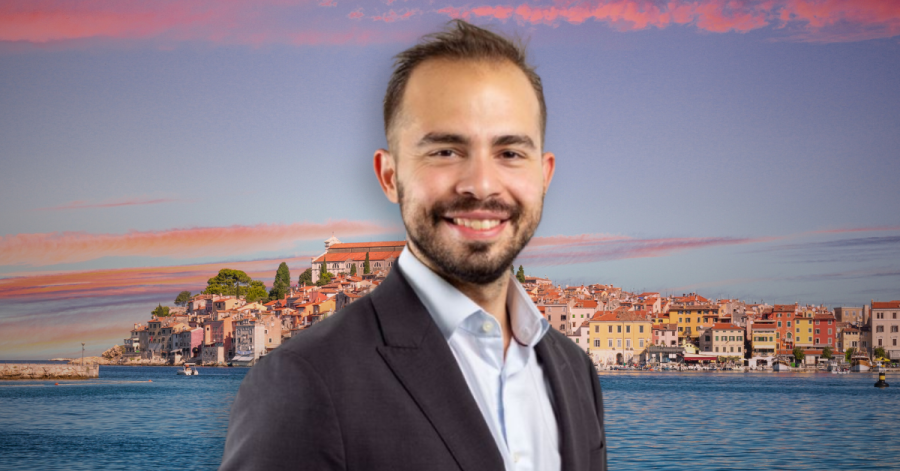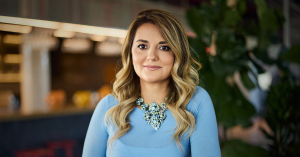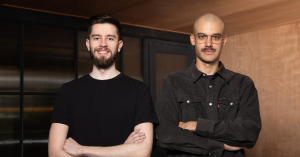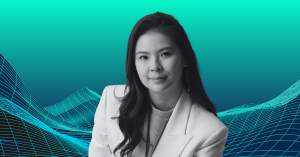Croatia’s Weekend Media Festival in Rovinj has been connecting various industries with communication and marketing experts for years. They’ve explored topics from fundamentals of digital marketing, employer branding and new social media strategies to leadership, technology and storytelling. No wonder one of their recent expansions revolves around AI innovations.
AI Weekend, the new AI conference in the region takes place in conjunction with the renowned WMF. From September 19th to 22nd, top-notch experts and enthusiasts from the AI world will gather to demystify this technology, unveil its potential, and showcase its exciting possibilities.
One of those experts will be Orestis Trasanidis, Director & AI Leader at the EIT Community in Silicon Valley. The EIT Community is a collaborative network comprising the European Institute of Innovation and Technology’s (EIT) long-term partnerships in academia, research, and business, among others, focused on on driving AI innovation.
As the EIT AI Leader, Trasanidis directs AI initiatives, coordinates projects, and leads an EIT Community, developing tools and contributing to policy reports. Additionally, as the Managing Director of the EIT Hub Silicon Valley, he works on fostering transatlantic synergies and facilitating access to US and EU programs, aiming to bridge the ecosystems.
We used the opportunity to speak with Orestis Trasanidis about those transatlantic collaborations, his expertise in leading innovation projects and AI initiatives, what it takes to make a good application for EU projects, and how regional startups can leverage them even more.
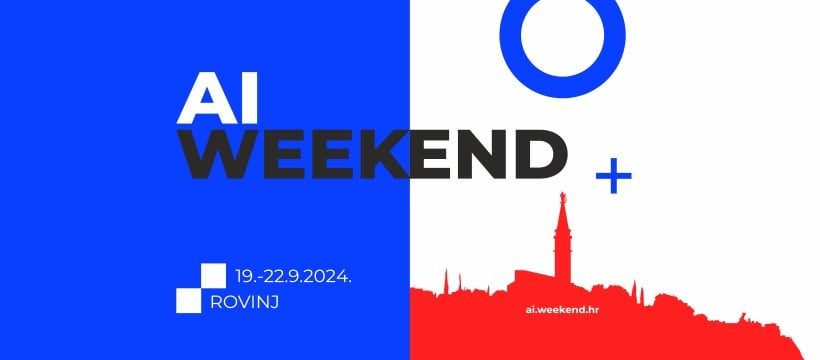
“How to get machines to do things they do in the movies”
Throughout his career, Trasanidis has been involved in numerous innovation projects all over Europe. He focused his academic work on decision-making, and in recent years, he has worked at EIT Digital to develop sustainable open innovation ecosystems. No wonder, as he holds MSc degrees in ICT, Smart Cities, and Environmental Engineering.
At one point, however, he switched his focus to AI. “AI became crucial when I started tackling sustainability challenges, especially around decision-making. I’ve always been driven by optimizing solutions to complex problems, and AI naturally aligned with that goal.”
His background in mechanical engineering and family’s influence sparked this curiosity early on, and experiences like founding a startup, engaging with innovators, and working on major international projects equipped him with the skills to pursue this global vision, he finds.
“AI’s potential has always inspired me because it provides unprecedented opportunities to solve real-world problems. As Aston Teller said, Artificial Intelligence is the science of how to get machines to do things they do in the movies.”
Today, as the Managing Director of the EIT Hub Silicon Valley, Trasanidis plays a pivotal role in fostering transatlantic collaborations. His team actively supports startups by refining their ideas and emphasizing scalability.
“We work closely with teams to refine their ideas, emphasizing execution and scalability,” he shared, highlighting the importance of mentorship and strategic networking.
By connecting startups with the right resources and providing guidance, Trasanidis helps them broaden their perspectives and better navigate the market.
Early-stage innovation in the US can benefit from European AI sandboxes
There are various key opportunities, but also challenges, in fostering synergies between the US and EU AI ecosystems, Trasanidis remarks.
He thinks the biggest opportunity lies in combining Europe’s focus on fairness, inclusivity, and trustworthiness with Silicon Valley’s entrepreneurial mindset. However, he acknowledges that regulatory differences, particularly around data privacy, pose a challenge.
“There’s also an element of protectionism on both sides, which can limit the potential for full collaboration. To succeed, we need to strike a systemic balance and focus on “friend-shoring”—building strong, cooperative relationships between the regions.”
When it comes to approaches on AI innovation, the differences are evident as well, in which culture plays a big role, Trasanidis asserts.
“In the US, innovation tends to move quickly, with fewer regulatory barriers and a strong emphasis on risk-taking, while the EU is more cautious, prioritizing ethical considerations and long-term impact. These approaches are complementary, and both sides can learn a lot from each other. Europe can embrace more agility, and the US can benefit from the EU’s thoughtful, systemic approach.”
To succeed, we should focus on building a two-way bridge—allowing early-stage innovation in the US to benefit from European AI sandboxes while helping EU solutions scale up faster on a global level.
Can the CEE region do it better?

Many innovative ideas are emerging in the region, he admits but warns that these often face challenges with visibility and cross-border networking, which are crucial for scaling.
“While the early-stage ecosystem in the CEE region is robust, there is a need for additional support to help these startups scale effectively and compete on a broader stage. More open innovation opportunities with industry and increased awareness about training & funding options, could greatly benefit these startups.”
Trasanidis thinks the CEE ecosystem needs to “focus on scaling up and creating successful unicorns that can serve as magnets and inspire the next generation”. He asserts that the missing element is the willingness to embrace risk and cultivate a winning mindset.
He also shared insights on how startups, especially from the CEE region, can better leverage EU programs, particularly for AI innovation. According to him, EU programs offer immense opportunities, providing access to new markets and infrastructure.
“Startups should approach these programs strategically by aligning with grants and funding opportunities that match their business plans,” Trasanidis advised. He emphasized the importance of staying informed, especially as the Horizon Europe framework evolves. Programs like EIT and EIC funding should be on every entrepreneur’s radar, he insists, particularly those focused on AI initiatives.
Common pitfalls of applications for the EU innovation programs
Trasanidis was involved in managing and coordinating activities for various European Central Bank (ECB) and European Innovation Council (EIC) projects as well as Horizon Europe initiatives. So we couldn’t miss a chance to ask him about the common pitfalls he has seen while assessing innovation projects.
He explains that many projects falter due to a lack of focus on genuine market needs. “There’s a tendency to over-promise and under-deliver on execution,” he noted. From his perspective, many startups neglect a thorough competitive landscape analysis, which leads to low-impact solutions that often overlap with existing offerings.
This misalignment, he believes, contributes to underwhelming exploitation plans. Reflecting on Horizon 2020, he pointed out that “for every €10 million spent on AI, inventors applied for an average of only 0.65 patents,” underscoring the inefficiency in translating innovation into tangible outcomes.
There is especially significant untapped potential in Greece and the CEE region and that reflects on the numbers, Trasanidis notes. However, he recognizes the complexities of navigating EU programs. Given that, he recommends entrepreneurs engaging with EIT KICs, which provide tailored support to help navigate these opportunities effectively.
If you want to catch Trasanidis in Rovinj, he is particularly excited to explore how AI can transform urban and healthcare systems, among other things…
“Additionally, I’m looking forward to discussing how the EU and US can collaborate on creating ethical AI. Finally, I’m eager to delve into the most innovative and unconventional ideas currently being developed looking to scale-up.”

